
Villanova Baseball commit Jake Francis is having another exceptional spring season. Jake started his training at RPP almost 2 years ago, in August of 2021. At the time he was 6’ tall and 160 lbs., coming off a PBR event where his velocity was sitting 80-82 mph. Fast forward to this spring, Jake is at 180 lbs., sitting 88-90 and recently touched 91 mph. His velo is up nearly 10 mph. This spring, in 51.1 IP, he has a 0.82 ERA and a 0.84 WHIP. He has only given up 6 earned runs in over 51 innings.
How did he do it?
Although his training with us began nearly 2 years ago, in this athlete highlight summary we are going to review his progress during the past year. His training last summer began with an initial assessment, which included the following:
-
- Movement screen
- Video analysis and motion capture analysis
- Strength and power testing
- Pitch design
Following the evaluation, we assembled a comprehensive plan for the upcoming year.
Movement Screen
The movement screen is a physical blueprint for what the body can and can’t perform during a delivery. Putting strength aside, many disconnects often come back to topics identified in the initial movement screen. Jake’s movement screen highlighted a few focal points that we thought could be affecting his delivery and needed to be addressed.
The first thing we noticed was that Jake was what we call a “Chest Breather”. This type of breathing is mostly due to the athlete not using the diaphragm and is usually accompanied by a hiking of the ribcage during inhalation. This state of inhalation will negatively affect the ability to rotate and combined with the low numbers in hip ER we noticed in the assessment were more than likely causing the compensations we see in Jake’s upper half in his video analysis.
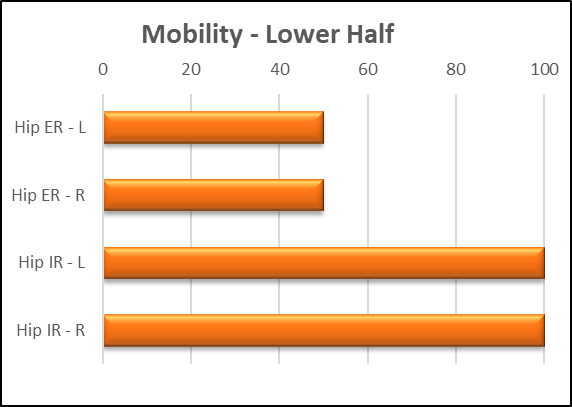
Video Analysis and Motion Capture Analysis
The video and motion capture analysis looks at over 60 different disconnects, from arm action to trunk movement to lower half movement patterns. It leaves no stone unturned, especially when it comes to including metrics that generally can’t be seen by the naked eye. The following is a general summary of what we discovered during the review:
-
- Lower Half – As high school pitchers go, Jake does an excellent job of using his lower half. He does however have a late pelvis at FP, more than likely due to inefficient Hip ER (referred to earlier). This can negatively affect Jake’s rotation throughout his delivery, particularly putting the hips in a compromised position to post-up as well as creating compensations later up the chain which we will talk about next.

-
- Arm / Shoulder – We know that most problems downstream usually are created earlier upstream. So, Jake’s rotational disconnects that we discovered in his hips and t-spine are more than likely causing him to compensate by cranking back into scap load (Jake’s 56 degrees is on the high side). This was putting his arm/elbow in an inefficient/low position (see low shoulder abduction@ FP) to achieve good lay back (Max ER), all of which can contribute to the late arm and the “Push” we saw in his video.
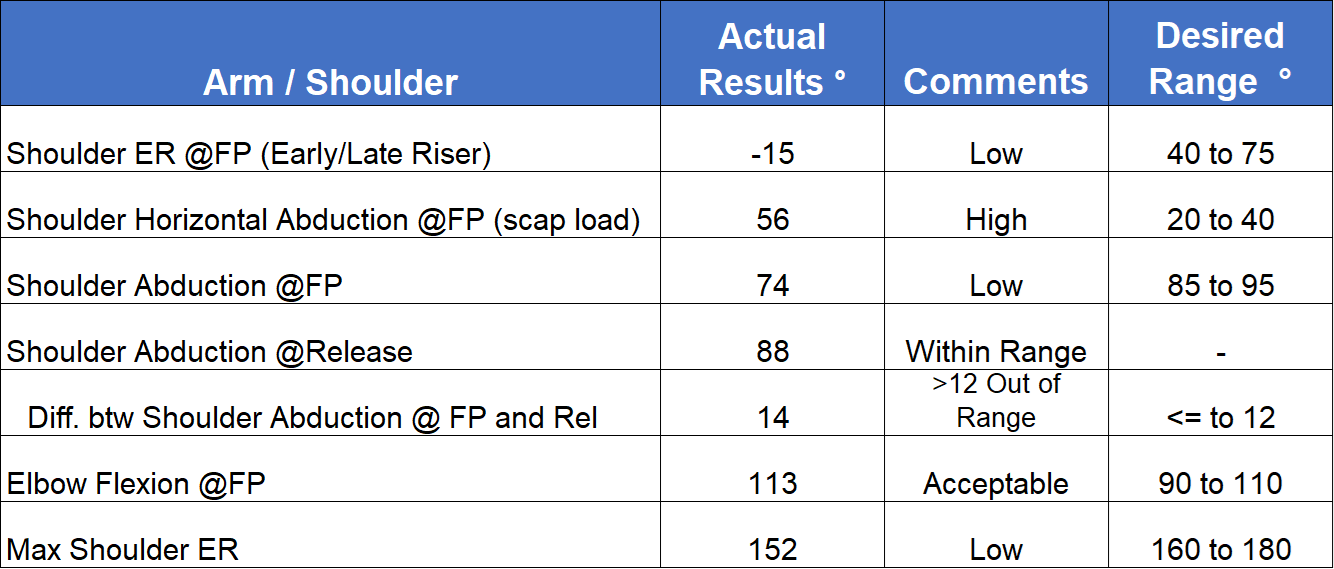
-
- Trunk Movement – Jake’s mocap showed that he was counter rotating quite excessively. This once again we believed was a factor in his inability to efficiently rotate his torso.
The following is a summary of Jake’s motion capture angular velocities year-over-year. You can generally see improvements across the board, especially with respect to Max Knee Ext. Angular Velocity, which has a high correlation to throwing velo. At the time of this eval, it had improved by nearly 20% from his prior mocap.
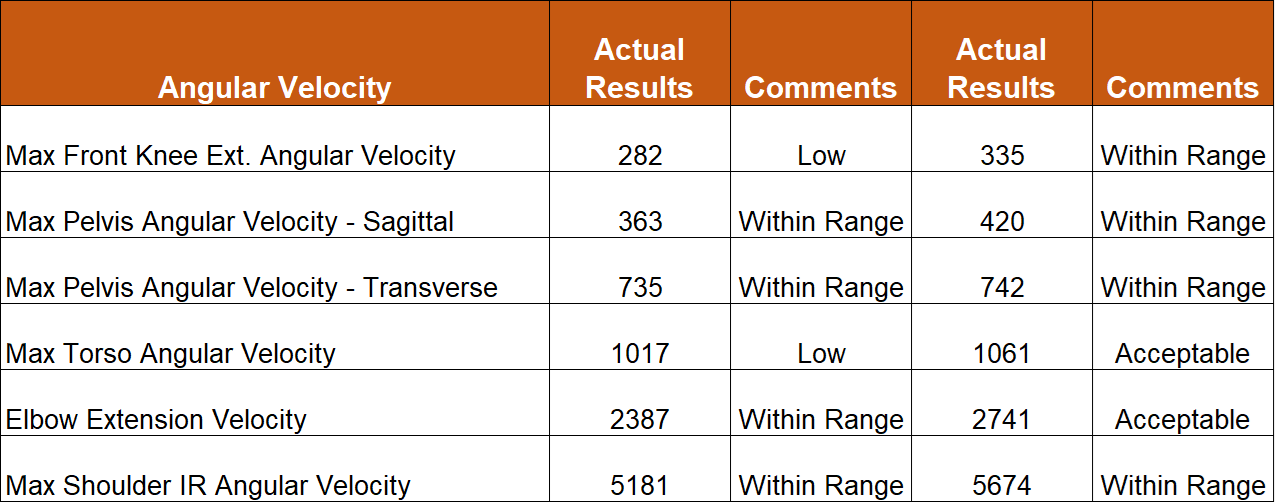
The improved velo in his post-up compared to his prior mocap should help him get more out of his lower half with less strain / compensation on the arm. Being that we were pretty early in the off-season, we could really focus on getting Jake back some hip ER and correct his breathing pattern to get some more upper half rotation.
Strength Testing
Our strength testing is predicated on two different metrics.
-
- Lean-Body Mass – First, we would like to see our athletes at a 2.5-3.0x weight to height ratio. When Jake began his training last year, he was 2.44x which is almost within the desired range. Now, at 180 lbs. is where we’d like to see him at a minimum.
- Max Strength – Second, we look to evaluate the athlete’s overall strength in the weight room with three basic lifts to check posterior / anterior chain strength in the lower half and upper body strength. Jake’s strength testing in the weight room highlighted excellent lower half strength and above average upper body strength.
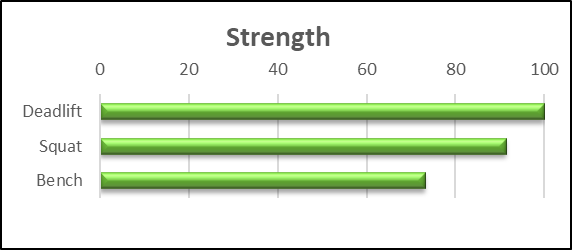
Power Testing
Jake demonstrated good plyometric ability laterally as well as being pretty well balanced in his ability to use both his SSC and muscular force. The fact that lower body strength and power are good mostly points to Jake’s mobility (mostly Hip ER, T-Spine Rotation and upper body strength) to help attain a higher velocity ceiling.
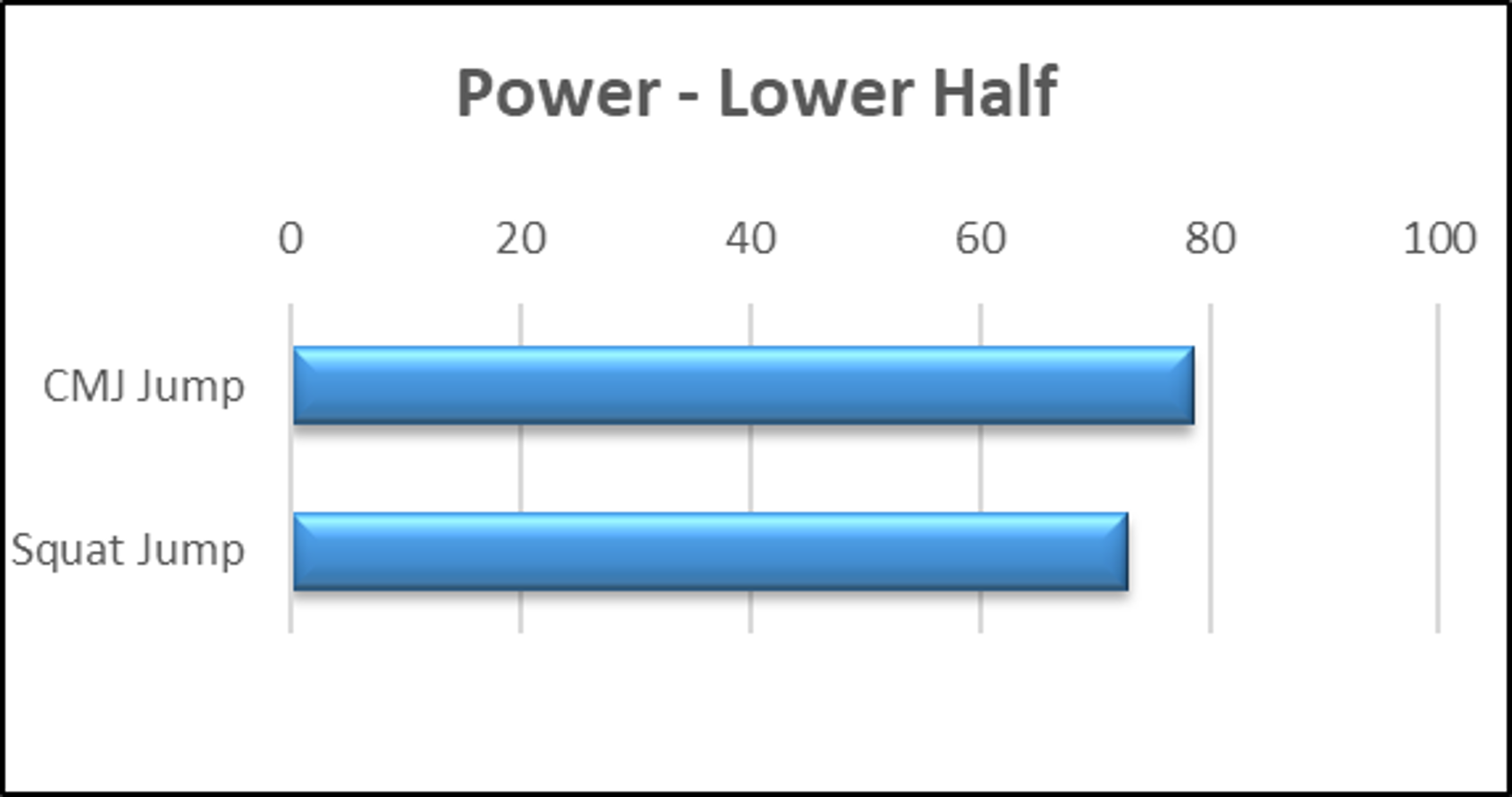
Pitch Movement
Jake’s success on the mound comes from several places, but his ability to move his pitches is advanced for the high school level. The following chart provides a summary of Jake’s overall pitch movement. As you can see, he can throw five differentiated pitches with distinct movement patterns. This is a ++ movement pattern.
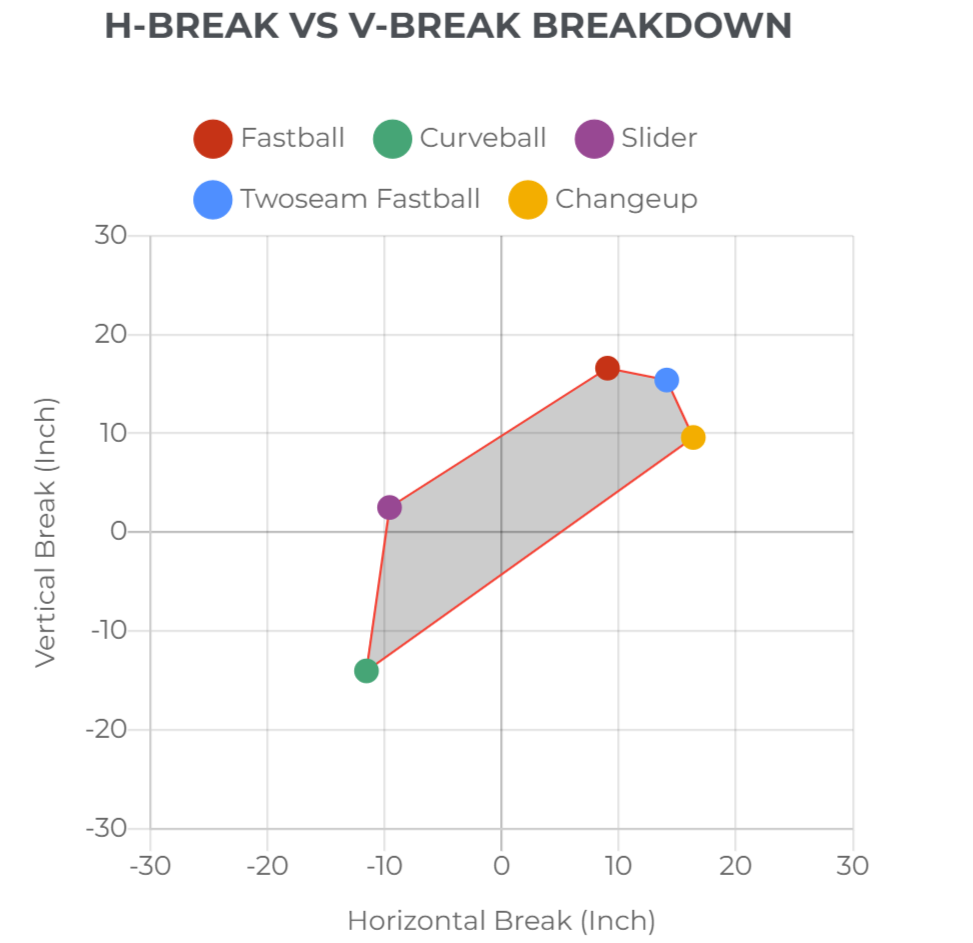
Update
During the past two years, Jake’s metrics have consistently improved across the board. Combined with his ability to throw harder, his success on the mound during the past couple of years is really no surprise. As mentioned earlier, his velocity is nearly up 10 mph since he began his training at RPP and his pitch movement is exceptional for a high school pitcher.
The following is a summary of his spring performance. His stats speak for themselves. Well done Jake, keep up the great work!

By Nunzio Signore and Bahram Shirazi
You live too far to train with us in-house at RPP? You can now train with us on a REMOTE basis.


